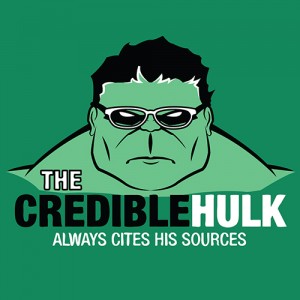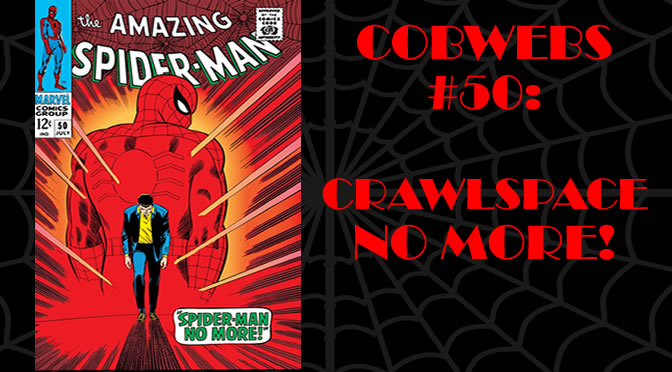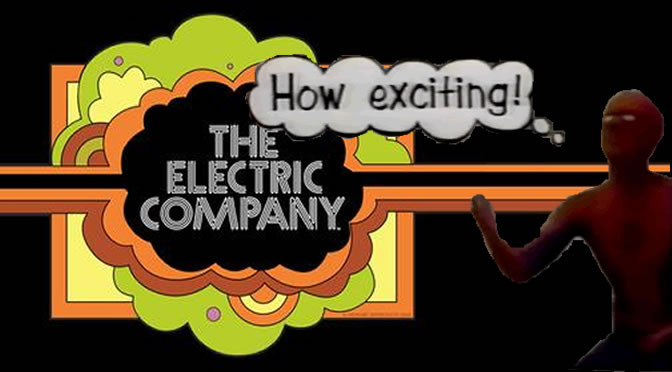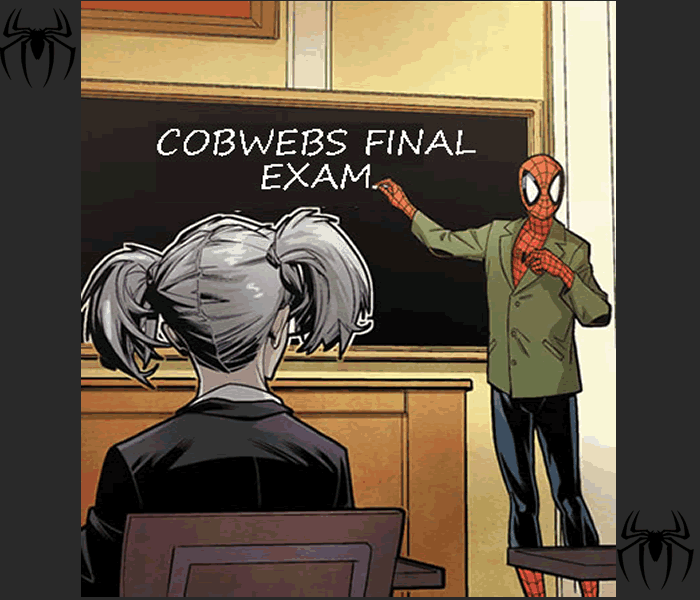 So you want to be a comic book writer. Or an artist. Or an inker. Or even a letterer. You don’t care, you just want to break in. But how does one go about doing that? Breaking into the business can be very hard indeed. If you are a writer, how do you get the visuals to showcase your story? If you are a penciler, what story do you draw? Adjectiveless Spider-Man certainly taught us that artistic ability does not necessarily equate to good story telling ability. If you are an inker, whose pencils are you going to use to demonstrate your talent? Same goes for lettering. No need to fear, however, because Jim Shooter designed a book to take care of that.
So you want to be a comic book writer. Or an artist. Or an inker. Or even a letterer. You don’t care, you just want to break in. But how does one go about doing that? Breaking into the business can be very hard indeed. If you are a writer, how do you get the visuals to showcase your story? If you are a penciler, what story do you draw? Adjectiveless Spider-Man certainly taught us that artistic ability does not necessarily equate to good story telling ability. If you are an inker, whose pencils are you going to use to demonstrate your talent? Same goes for lettering. No need to fear, however, because Jim Shooter designed a book to take care of that.
Hold that thought and let’s refer back to Crawlspace podcast #386. It is a rare podcast indeed that something pops up to make them say that they are not sure what is being referenced. That happened when talking about Jon Watts (the director of the new Spider-Man movie), an article where he talks about his history with Spider-Man, and a particular Spider-Man drawing comic. I must admit that at the time, I didn’t know what was being talked about either.
So read on fans and see if I found something that ties these two together and something even you hard core Spidey fans didn’t know.
The hardest thing about writing a Spider-history column for the Crawlspace is not in coming up with things to write about. Spider-Man has a rich history both on and off panel. My challenge became clear after I took the position. My audience is not just the new reader that doesn’t know Spider-Man’s history, it is the fan that already has read hundreds of Spider-Man comics, listened to the podcasts, read all of JR’s Spidey Kicks Butt, and the person who listens to the Spider-Man Jeopardy podcast with the aim to beat the hosts (opps, sorry – host and panelists).
 That means I have to walk the fine line of finding something that is obscure enough to miss the attention of the average spider-phile, but also make sure it fits into the greater history enough to be relevant. This book mentioned in the podcast, I believe, fits that bill.
That means I have to walk the fine line of finding something that is obscure enough to miss the attention of the average spider-phile, but also make sure it fits into the greater history enough to be relevant. This book mentioned in the podcast, I believe, fits that bill.
In the podcast, George references an article about Jon Watts from Superhero Hype where Mr. Watts says “I had this learn-to-draw Spider-Man comic book. There were some panels that were blank panels for you to fill in the rest of the story and then some that were just pencils for you to ink and then there were some that were already inked for you to color to decide if you want to be the penciler or the inker or the colorist or the writer. I was obsessed with this book. I would bring it to school every day until I had slowly filled up and colored every panel.” Nobody on the podcast recognized what he was talking about and assumed he must be referencing the Drawing Comics the Marvel Way. That was my first thought as well. The problem pointed out in the podcast is that this is not really a Spider-Man book. So I set out to see if there was a better answer. To find it, we need to go back to the ‘80s.
*Cue time travel sound effect*
Jim Shooter, in all of his wisdom and majesty, realized the problems stated above about breaking into the business. He designed the Marvel Try Out Book. This book is awesome. It is a comic printed on art board and is oversized. It is written by Jim Shooter and features artwork by John Romita Sr. and inks by Al Milgrom. The story is a Spider-Man story titled “Personals”. However, the comic book is incomplete. There are three pages completely done. Four pages that are inked and ready to be colored, four pages that are penciled and need to be inked, two pages that are scripted and need to be lettered, five pages that are written, but need someone to draw, and the end of the comic is left open to be written by the aspiring writer. It was, as Shooter put it, “an opportunity to prove yourself under simulated ‘combat conditions’ – as close as possible to actual, professional working conditions.”

On top of all that, the book was a contest. Readers were encouraged, if they felt their work rivaled the quality of the first three pages, to turn their work into Marvel. Here’s how the first four pages look. You can see how the parts of the comic book drop out as it goes.




The plot is fairly basic. Spider-Man stops a crime. A woman named Janet sees it and is inspired by Spider-Man’s heroism. Spider-Man struggles with Doc Ock. He reads the newspaper and sees in the personals section a letter from Janet which inspires him to continue on. Doc Ock also sees the personals directed toward Spider-Man and kidnaps Janet. Spidey must save her, but how? That is up to the person trying out his/her writing skills.
Originally the story was to be published once completed and the work of the winners of the competition would be showcased in the final product. While that never happened, the winners were announced. You may recognize a name or two from the list.

Chuck Duffie won the plotter and scripter category. He never went into comics, but was, at one time, the Maitre’ d at the Ocean Club restaurant. Jim Shooter said that he went there one time (not knowing Duffie was there) and got all this complimentary food and drinks and finally Duffie came over and introduced himself.
Mark Bagley won the pencils. Do I really need to tell you what he went on to be? He had tried for years to break into the comic book business and thought about giving it one last try with the Try-Out competition, but was deterred by the $12.95 price tag. Here’s what he had to say about the process: “I thought it was a gimmick…something Jim Shooter came up with, and I didn’t buy it. Luckily, Cliff Biggers, the guy who publishes Comic Shop News, was a friend of mine. He owned the comic book store that I went to at the time. He told me, “If you don’t do this, you’ll hate yourself.” So, he gave it to me. And, I won first place. That got me a trip to New York and a chance to meet all the editors. I went, and they threw me out of their offices. The last editor I saw on the last day I was there said, “Hey, I bet you’d like something to draw, wouldn’t you.” I said, “Yeah!” That was, I think, Mike Higgins who was editing the New Universe which was kind of winding down. He was desperate for people to work on it, and I was desperate for work. I did 4 or 5 jobs for him. After about a year and a half of doing it, I was able to quit my regular job and do comics full time. And, I’ve never looked back.”
Doug Hazlewood won the inking contest. He went on to work for DC mostly doing Superman books.
Jeanine Pasda won the colorist. To my knowledge, she never had anything to do with comics after winning this. And she must not have given Shooter any free drinks at a restaurant either since he never mentioned it in his blog.
Robin Riggs won the letterer contest. He went on to have a career in comics, but not as a letterer. He inks a lot for Marvel and DC, mostly British comics. He even provided the art for a Sir Apropos of Nothing series, which I knew of the book by Peter David, but did not know it had a comic version of it.
These winners got this certificate to hang on their refrigerator:

In the Bullpen Bulletin that announced the winners, Jim Shooter gave this word of encouragement to those who wanted to use the book to still try out: ”The contest is over, but Marvel has always welcomed submissions (at least while I’ve been in charge anyways) and always will.” Hmmmmm….. always, huh? Well we know only a sith deals in absolutes. Sith lords and Jim Shooter anyway. Here is what Marvel now says about accepting submissions:
“Marvel does not accept or consider any ideas, creative suggestions, artwork, designs, game proposals, scripts, manuscripts, or similar material unless we have specifically requested it from you. Marvel is continuously developing and creating its own ideas and materials, and we don’t have the resources to review or respond to unsolicited material. Unfortunately, any unsolicited material you send will not be read or shared. It will be destroyed, and it will not be returned.” They go on to say that you should find somewhere else to publish your work and “if you have the right stuff…we’ll find you.” Don’t call us, we’ll call you…

Marvel did come out with another one of these try out books in 1996. There was no contest involved and it was updated to show computer technology advancements in art. This one had an X-Men story with art by Andy Kubert.
It still has the big art pages, but the one reviewer on Amazon said that it didn’t have the blue pencils for people to practice inking and that the art is considerably harder to mimic than Romita’s.
I did not get the feeling that this one was hyped much and without the context attached to it, it probably didn’t sell as well. It’s been long enough. I think Marvel should consider releasing a new one.

As a side note, I found a little about this ad for the book. Somebody asked Jim Shooter about the items on his desk. This is a sore subject for Shooter. It seems that the drawing is an accurate depiction of Shooter’s desk back in the day. However when Marvel moved him out, they put several people who were not big fans of him on clean out duty (in his words: “cretins who particularly hated me”). They were not kind in the way they handled his stuff. Among the things they broke and smashed while “packing” his office included the gumball machine shown here. The monkey and the bear both survived the process, you may be glad to find out.
I wish they would do this again as a contest. It was a really neat idea. Curious if any of our readers out there entered the contest back in the day – and who would enter one now? And let me know – did I find something new to you?
 Sources:
Sources:
“Comics: The Official Marvel Try-Out Book #1.” Spiderfan. Comic Boards, Aug. 2013. Web. 10 Jan. 2016.
Douglas, Edward. “Exclusive: Jon Watts on His Childhood Love of Spider-Man.” Superhero Hype. Crave Online, 4 Aug. 2015. Web. 10 Jan. 2016.
Jay Jay. “Try Out Contest Artifacts.” Jim Shooter. Blogger, 8 Sept. 2011. Web. 10 Jan. 2016.
Lequidre, Zorikh. Comment on: “The New Official Marvel Try-Out Book.” Amazon. Amazon, 25 July 2003. Web. 1 Jan. 2016.
“Robin Riggs.” Wikipedia. Wikimedia Foundation, 9 Jan. 2019. Web. 10 Jan. 2016.
Saffel, Steve. Spider-Man the Icon: The Life and Times of a Pop Culture Phenomenon. London: Titan, 2007.
Shayer, Jason. “1983 – The Official Marvel Comics Try-Out Book.” Marvel Comics of the 1980s. Blogger, 6 Nov. 2014. Web. 1 Jan. 2016.
Shooter, Jim. “A Recent Question and an Answer.” Jim Shooter. Blogger, 27 Aug. 2011. Web. 10 Jan. 2016.
Shooter, Jim. “No, Really, This Time for Sure, the Startling Conclusion of the Submissions Saga.” Jim Shooter. Blogger, 9 Sept. 2011. Web. 10 Jan. 2016.
“Submission Requests.” Marvel. Marvel, 2016. Web. 1 Jan 2016.
Images:
The New Marvel Try-Out Book Cover









Nice inks, man.
Spider-Dad, I miss your comments about the podcast episodes. Those were some of my favorite.
@#5 Actually there is a “Fan Art” thread on Crawlspace that I posted my “inking” submission for this very book. Middle of page 6 of that thread if the link does not take you directly.
http://spidermancrawlspace.com/wwwboard/viewtopic.php?f=8&t=967&start=75
@BD, where have a been? Well as always lurking on Crawlspace, but not commenting often. Saw this one and just had to comment. Plus that and the hoodie…
Awesome! It’ll be very interesting if you can get Chuck Duffie’s response. I’m dying to know how he got Spidey out that impossible cliffhanger. For that matter, I wonder if Jim Shooter had an idea of how he would’ve ended it? Or did he just plot it up to the cliff hanger and said, “I’d like to see someone get Spidey out of that predicament?”
I like the idea of stepping on the shooters. Clever and works. Of course, today he could just say, “Web cartridge 10” which of course activates an electro magnetic pulse webbing to disable the machinery and then Mocking Jay and Coulsen would come in and take care of Doc Ock while the girl laughs at Spidey since he had a rip in the butt of his pants the whole time.
I think I tracked down an email for Chuck Duffie. I am waiting for a response from him.
Actually now that I think about it a bit more, I think when I wrote up the first ending, it went something like this:
1) Ock is distracted by the police siren, turns his head. Peter STEPS on his webshooter lying on the ground, aims it towards Ock and taps it with his toe to activate it! (In this way, he doesn’t have to leap across the room all the way to get to Ock) The web catches Ocks arm and Spidey pulls the web back using his FOOT to get Ock’s hand off the trigger! It’s been 30 years now but thinking back, I think that’s how I wrote it!
@#5 – Well like I said, it was kind of an impossible situation that Jim Shooter set up for the ending of the story. Peter’s girlfriend is restrained by Doc Ock in an old abandoned warehouse. Spidey enters and Doc Ock tells him that she is wired to be electrocuted. He has his finger directly on the button and if he makes a SINGLE move to save her then he’ll electrocute her. He has Spidey remove his webshooters slowly and then raises his tentacles up to begin thrashing him to death. That’s our cliffhanger. So near as I can tell there were only two ways Peter and the girl could both escape alive.
1) A sound distracts Doc Ock from outside – something sudden like a police siren going by outside the warehouse. All it would take would be a momentary distraction. Now the kicker is normally Spidey would shoot a web across the distance between them, but he doesn’t have his webshooters on anymore. He’s standing across the room from Ock. So my initial idea was that Spidey would have to leap across the room in the one second that Ock was distracted by the sudden sound outside. I thought perhaps the distraction could come from Spidey triggering his spider-signal directly into Ock’s eyes, but I think Ock would’ve just pushed the button then and there. Remember that the girl is restrained completely and can’t help in the resolution. So in one version I wrote, a loud siren goes off outside (a deus ex machina if you will) leaving Ock distracted for a few seconds. Spidey would use that distraction to get Ocks hand off the trigger and they fight. The girl is disturbed by the experience and decides the life of a superhero girlfriend is not for her. The End. I agree not a great ending but hey I was young!
2) The other idea I had was that Spidey would have unplugged the electrocution machinery prior to entering the warehouse in the first place. So Doc Ock goes to push the button and nothing happens! They fight and Spidey frees the girl, etc. The problem with this ending was that Shooter doesn’t give Peter enough time as he enters the warehouse to have noticed and dismantled the machinery.
I agree that neither idea is very good but I honestly struggled with this at the time. With Spidey across the room from Ock without webshooters, Ock’s finger on the button and the girl restrained, there aren’t a lot of options left for both of them to live through the story!
Anyone else out there had an ending? That they even submitted perhaps?
Great article. I really really want to see the finished books by the winners. So curious to see how they did it.
@5 – These are the first 3 people I’ve ever heard from that ever owned the book. Almost every other comic-book reader I’ve mentioned this too either never heard of it, or heard of it because that’s how Bagley got his start.
@#1 – I’ll take you up on that challenge. So now you’ve got my curiosity peaked – what was YOUR ending?
@#2 – Apparently more memorable than you think. The first three replies are from people who own the book. I was hoping to find something new.
@#3 – Tough loss! 🙂 I think it is time to brush off those pencils and try again!
@#4- Thanks!
Great article as usual.
Spider-Dad??!?!?!? Where ya been?
I have this book and did try my hand on the pencils/inking section. I was in college at the time, so I had other priorities so never finished. Glad to see that I “lost” to Mark Bagley! Of course, I was never as good as him…
I remember seeing this book when it came out. For most people that remember it, it’s probably only memorable because of Mark Bagley. If not for him, this probably would be long forgotten.
I remember this quite clearly. I bought a few copies of the book so I could try out each skill a few times and see if I had any propensity towards a particular skill. Flash forward about two years to 1987 – when I was trying to break into the industry as a comic writer. I was going to conventions and meeting with editors and people like Carol Kalish and Peter David. I was even invited to the Marvel offices to drop off my scripts. I have all the photos from my visit, hanging out in Jim Salicrups Spidey office. Tom Defalco had just taken over as EIC one month earlier. And what was one of the scripts I dropped off? My particular ending I would have had for THIS try out book story. Now there were two other original scripts, but I included my try out book ending just for fun. Given I didn’t know the animosity towards shooter at the time, that probably wasn’t a great idea but how would I have known that?
Now here’s a challenge for you. I’ve never heard of anyone who could tell me what the final plot Chuck Duffie submitted was. I’ve only seen the anecdote about him working as a maitre’d. I would LOVE to know what his idea was and why shooter accepted it as the winner. If you’ve read the book, it ends on a particularly impossible cliffhanger. Spidey is standing in front of Ock with his web shooters removed. Ock has his finger on a button that will electrocute his girlfriend should he move a single muscle! So I would to hear how Duffie wrote him out of that!